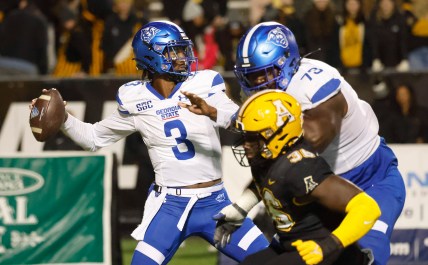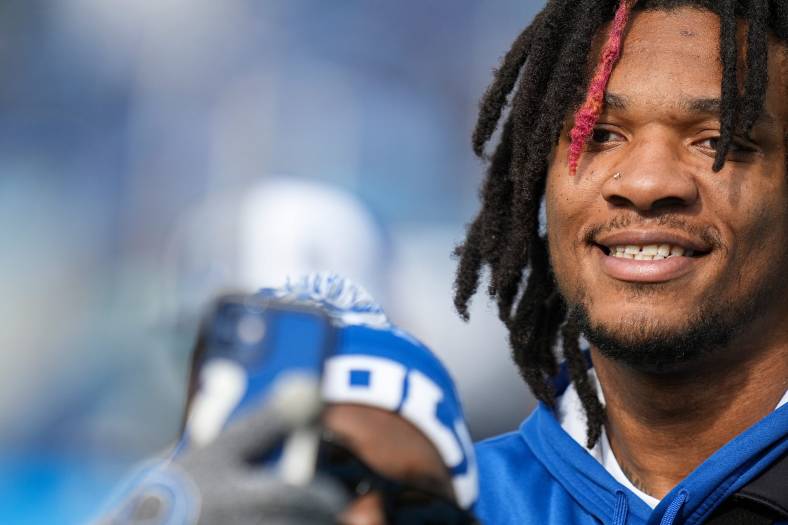
The Indianapolis Colts had a winning season and a lot of the credit can be given to rookie head coach Shane Steichen. His ability to game plan and call plays in the game was fantastic this past season. But even before the season started, he had a say in the type of players he wanted to coach.
It was very apparent when the Colts selected quarterback Anthony Richardson and wide receiver Josh Downs. In the past, GM Chris Ballard steered away from drafting a quarterback, electing to go with the retread veteran quarterback. And also selecting big wide receivers instead of the smaller, quicker ones.
Now, with every draft choice, there is a bit of luck or good fortune involved. Coaches believe in their ability to coach any player, but as we’ve seen that’s not always the case—for example, the Colts’ decision to select Jerry Hughes or Bjorn Werner. Neither player panned out for the horseshoe, but in Hughes’ case, he’s had a successful NFL career.
So, how did this year’s group of rookies fair? Here’s a look, with grades, at how well these first years performed. For comparison, here are their grades after the draft.
Related: 2024 NFL mock draft
Shane Steichen Head Coach – A
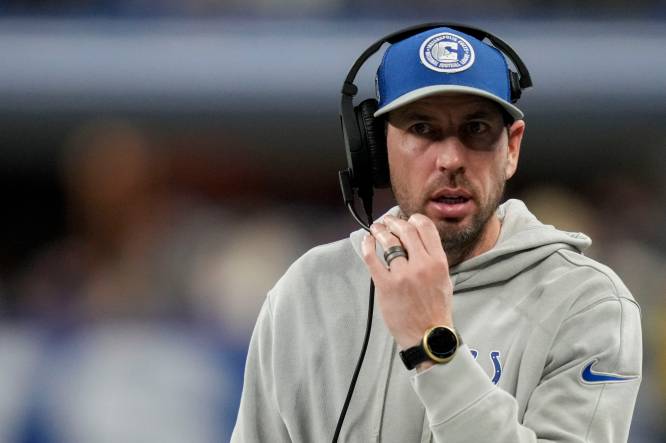
The first-year head coach performed very well. The roster he inherited appeared to be devoid of very many playmakers on offense and defensively they were down several after some offseason trades and player cuts. However, with basically the same offense from the previous year the Colts’ offense went from being ranked 30th to 10th. Meanwhile, the defense remained the same (28th) regarding points per game allowed.
The most impressive feats that Steichen showed this season were his ability to adjust the offense to the strength of his quarterback and hold his players accountable. There were several games where rookie quarterback Anthony Richardson left the game early due to injury, and backup Gardner Minshew replaced him without the offense being negatively impacted. Adjusting the offensive game plan on the fly is something that Steichen made look easy, but it is far from that.
Anthony Richardson – First round fourth overall – C
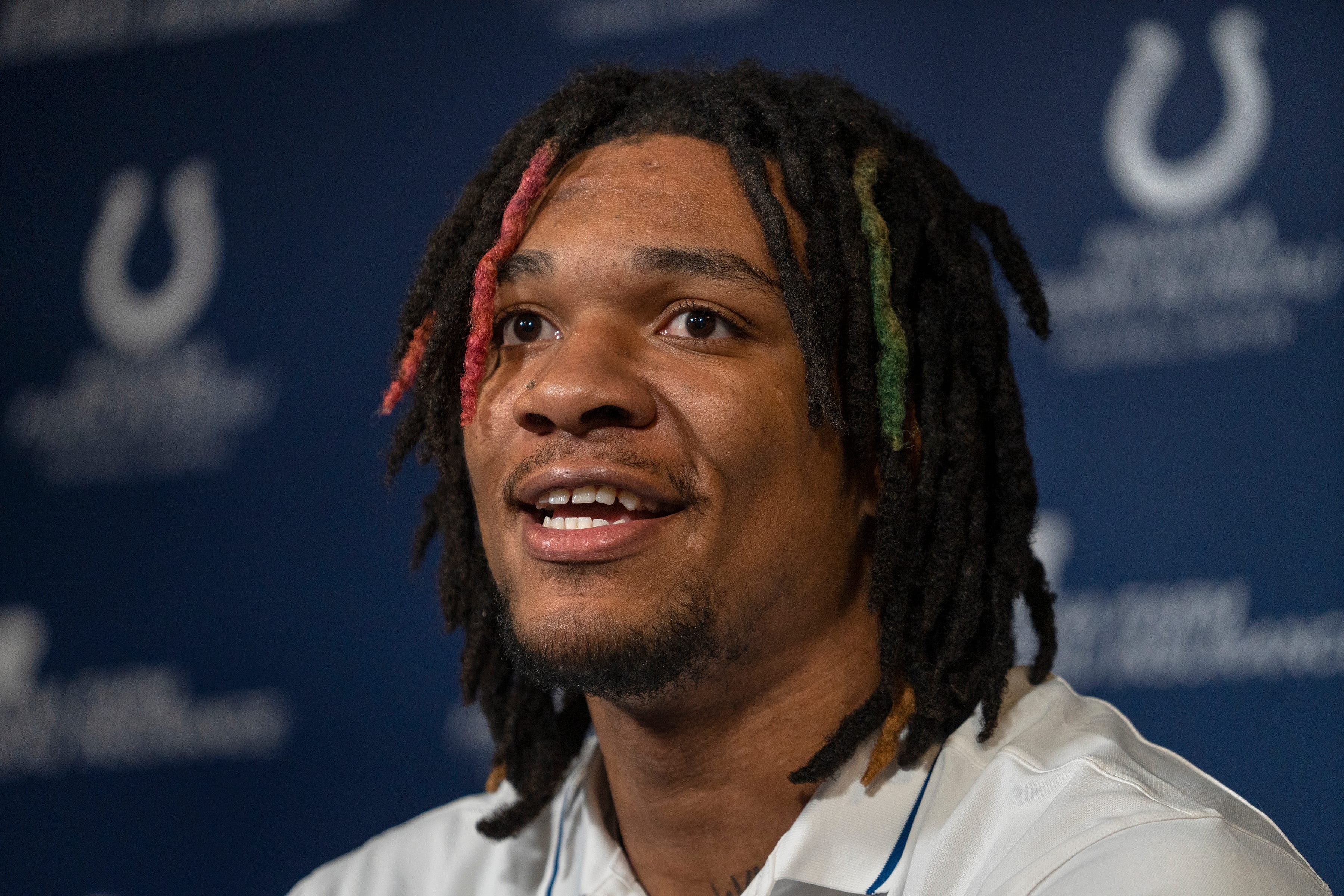
Richardson was the fourth overall selection for the Colts and a divisive one amongst the fan base. His rookie year did not go anywhere close to as he had hoped. As previously mentioned, he left three games early due to injury and missed another game entirely because of a concussion.
Two of the biggest concerns about Richardson were his lack of experience and his injury history. Unfortunately, his first year in the NFL did little to quell those concerns. However, in the four games that he played the rookie showed off his potential. He contributed seven touchdowns to just three turnovers, and 713 combined yards while completing just under 60% of his passes.
It’s hard to give him a better grade, considering he missed as many games in his rookie year as he played in his final collegiate season. He still shows immense potential and his shoulder surgery went well as his current recovery. There remains strong hope that with a full healthy season from Richardson, the Colts will be back to dominating the AFC South once again.
Julius Brents – Second round 44th overall – C
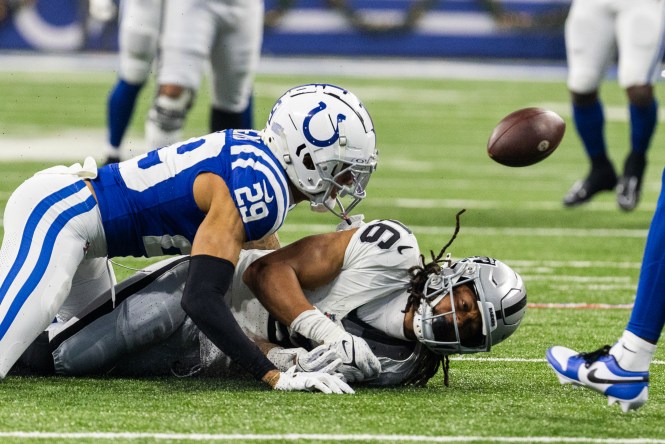
The local kid had a first year similar to Richardson, as both missed over half of the season. A difference is that Brents missed a lot of the off-season due to injury whereas Richardson got many valuable reps. But when Brents was able to play he fared well.
- 43 tackles 30 solo six PD one Int 1 FF 1 FR 65.4% Cmp%
Brents shows promise as one of the team’s outside starting cornerbacks. But he will need to have better fortune in the health department if he’s going to reach his full potential. With now a full season of NFL coaching and experience he should only be better in his second season.
Related: 5 things the Indianapolis Colts can do to improve in 2024
Josh Downs – Third round 79th overall – A
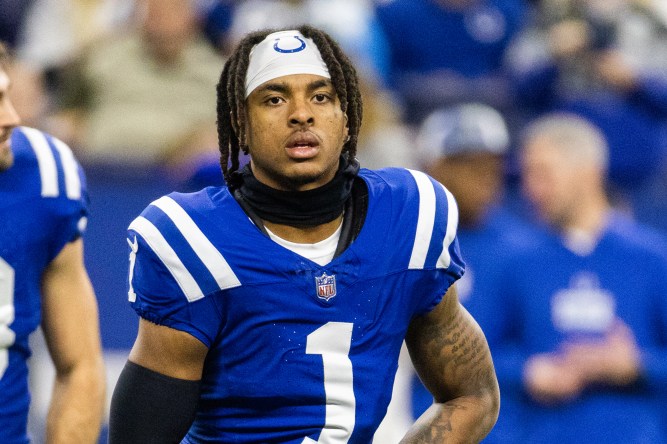
The selection of Josh Downs was heavily influenced by Steichen. Downs proved almost immediately that his drafting was not a mistake. He did initially start the season fourth on the depth chart behind Michael Pittman Jr., Alex Pierce, and free agent signing Isaiah McKenzie. However, it wasn’t long before Downs overtook McKenzie.
- 98 Tgt 68 Rec 771 Yds 11.3 Y/R 2 TD
Amongst some Colts fans, Downs is the second-best wide receiver on the team just behind Pittman. Regardless, Downs showed versatility to be able to pay both inside and outside. The ability to play on the outside is significant as a concern from scouts was the fact that his size would relegate him to mainly playing in the slot.
Downs was able to play in all 17 games and started nine of them. He will look to build off his rookie year and build an even better connection with Richardson too.
Blake Freeland – fourth round 106th overall – B
Blake Freeland was an offensive tackle out of BYU who many scouts said was a “project” but had the tools to play in the NFL. He was also expected to go earlier in the draft. However, he lasted until the fourth round and was a great selection by the Colts. Freeland played in 16 games and ended up starting nine of them, due to the injured Braden Smith.
Again, the thought with Freeland is that he would use the majority of his rookie season to get better coaching, so he’d be able to contribute more in his second year, but not get a lot of playing time. However, he ended up playing 702 snaps, and his weaknesses were exposed. On the bright side, he only committed four penalties all of which were false starts. Due to this experience, he will be even better next season and provide some relief should injuries strike the offensive line again.
Adetomiwa Adebawore – fourth round 110th overall – C
Adetomiwa Adebawore is another player who was not expected to last until the fourth round and be available for the Colts. He had a strong final season at Northwestern and an even stronger combine. It was the latter that vaulted his draft stock and led to the speculation that he could get drafted in the first round. That didn’t happen and Indianapolis is thankful.
- 5 Comb 4 Solo 1 TFL 4 QB hits 2 QBKD 4 Prss 1.5 Sck
He didn’t see a lot of playing time in his rookie season and that is due in part to two big reasons. First, he’s a raw prospect who needs more NFL coaching to better utilize his skills and a deep group of defensive linemen. Secondly, Adebawore is considered a tweener as he’s too small to play on the edge lacks a variety of pass-rushing moves, and is too light to play on the inside. But despite all of this he was able to play in 10 games. He’s going to need to better his pass-rushing moves to be able to play on the edge and/or get stronger to be a speed rusher on the inside to be able to play on obvious passing downs.
Darius Rush – fifth round 141st overall – F
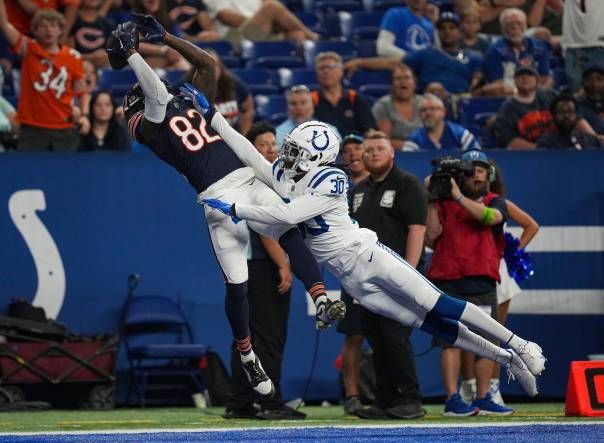
Darius Rush was part of a trio of cornerback selections by Ballard and the Colts. An obvious need of the team was cornerbacks and the team made a conscious effort to address this area of need. He was a player that fits the profile of the type of corner that defensive coordinator Gus Bradley prefers.
- 3 Comb 2 Solo 1 PD 50% Cmp%
Somewhat bizarrely Rush was cut by the Colts before the season started. This was due in large part to the play of fellow rookie Jaylon Jones and other cornerbacks on the roster. To date, this is still a somewhat odd move but it does show that this team isn’t afraid to admit they made a mistake and rectify the situation. Rush was initially claimed by Kansas City, then released and picked up by Pittsburgh where he played in three games. Considering he was cut before the season started an F grade is all but assured.
Daniel Scott – fifth round 158th overall – Incomplete
The Indianapolis Colts had three fifth-round selections and Daniel Scott was their second pick in this round. He was a bit older compared to other draft picks and many scouts expected him to mainly contribute on special teams. Unfortunately, he tore his ACL in OTA’s and was lost for the season.
He still profiles mostly as a special team contributor but upon further review, there is a chance he could make some contributions on defense. He wouldn’t be the first special teamer to earn more playing time – for example, Zaire Franklin, George Odum, and Zack Pascal. The Colts might need some more help at safety depending on what they decide to do with free agent Julian Blackmon.
Will Mallory – fifth round 162nd overall – C
Will Mallory was a bit of a surprise selection to some fans, considering the Colts already had Mo Allie-Cox, Kylen Granson, and second-year players Andrew Ogletree, and Jelani Woods. However, there was some obvious connection of Mallory to the state of Indiana, as his grandfather was the head coach at IU, and his uncle is the current head coach at Indiana State University. Mallory was an intriguing prospect coming out of college and could end up being the best tight end on the Colts
- 26 Tgt 18 Rec 207 Yds 11.5 Y/R 0 TD
. However, considering the group of tight ends that were already on the roster more could be expected of him in his rookie season. Woods dealt with a hamstring issue that kept him out all season. Allie-Cox is better as a blocker than a pass catcher and Granson is well-rounded but is still better as a player coming off the bench. Ogletree might be the best all-around tight end, but is now facing some legal issues and assuredly some NFL disciplinary repercussions. And yet Mallory wasn’t able to earn more than 159 snaps, which was good enough for fourth on the position group.
Jaylon Jones – seventh round 221st overall – A
We’re going to skip ahead a bit as the three remaining draft picks all received the same grade because they barely played, which will get to in a bit. As for Jaylon Jones, he was an incredible draft pick. He paid huge divided ends for the Colts in his rookie season. As previously mentioned, Jones’ performance in the offseason played a factor in the cutting of fellow rookie Darius Rush.
- 44 Comb 33 Solo 1 TFL 56.5% Cmp% 5 PD
It’s not often that a seventh-round pick plays so much, 787 snaps to be exact, but Jones plays a position that was hit with adversity. In the offseason, the Colts traded away Pro Bowl Stephon Gilmore and then cut Isaiah Rodgers leaving slot corner Kenny Moore with the most experience. In the season, Dallis Flowers tore his Achilles and was lost for the remainder of the year. All of this allowed Jones the opportunity to play and overall he did not disappoint. His expectations for next season will be very high.
Evan Hull – fifth round 176th overall – Incomplete
Titus Leo – sixth round 211th overall – Incomplete
Jake Witt – seventh round 236th overall – Incomplete
This trio of players barely got any playing time and when viewing their draft selection this wouldn’t be shocking news. What is shocking is that all three of these players ended their rookie season on the injured reserved list. Evan Hull did get to play in one game playing eight snaps gaining one yard rushing on one attempt and catching one pass for six yards.
Hull suffered a knee injury in Week 1 against Jacksonville and was lost for the season. But before he suffered his knee injury both Titus Leo and Jake Witt suffered injuries before the season started. Witt was placed on IR on August 6th with a hip injury and Leo was placed on IR on August 29th with an undisclosed injury.
All three of these players will be competing for a roster spot heading into the upcoming season. If they make the roster they should be able to contribute to the Colts and help them during the season.
The “gold standard” of draft classes for GM Chris Ballard has been 2018. That class saw them select current Indianapolis Colts players Quenton Nelson, Braden Smith, Tyquan Lewis, and Zaire Franklin. It also saw the team select other current NFL players Shaquille Leonard, Nyheim Hines, Daurice Fountain, and Matthew Adams. That is eight of the team’s 11 draft picks that are still currently playing.
It’s not often that 72% of a team’s draft class is such a success but it is exactly what the Colts are hoping to have happen again with their 2023 class. Right now, this class as a whole receives a C grade. However, time will tell as to how successful this class will ultimately be but it’s shaping up to be another successful one.
